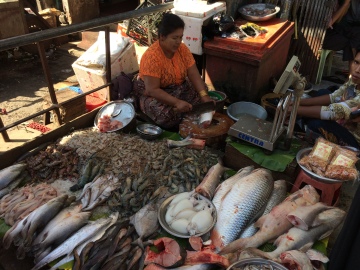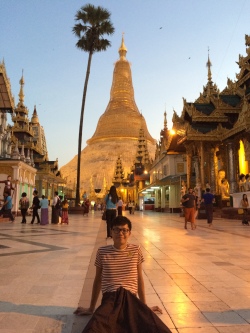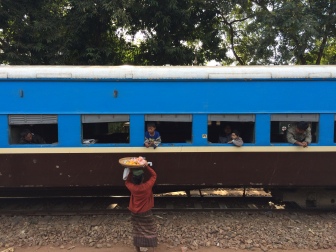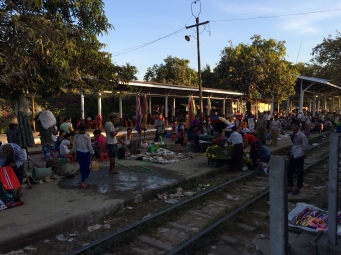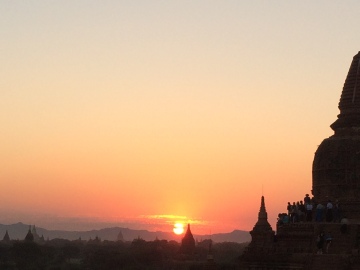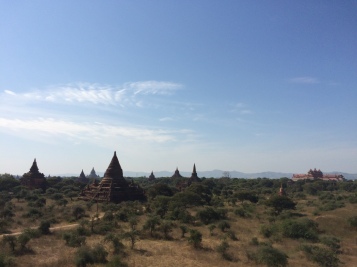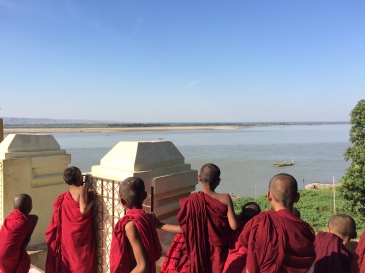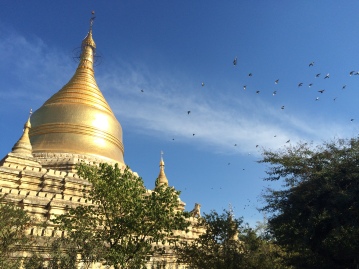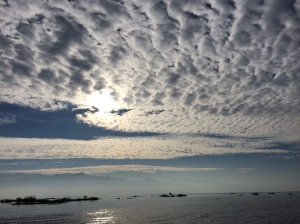Travels in Asia Part 1 – Meditations on Myanmar
2015 marks a full eight years since I first set foot on East Asian soil. That 2007 morning, stepping out from Suvarnabhumi Airport, on the outskirts of Bangkok, the first thing that hit me was (and I know that this is far from being an original thought – every visitor to the far east since Marco Polo has had this thought to the point of ridiculous cliché – but still)… the humidity. Clichéd yet true: humidity gives the tropical air an edge that you can’t quite place: a scent, a texture, a tone…
Anyway, I’m setting myself a project for this year: to write a bit about all ten countries that I’ve visited in this part of the world. Some of which I spent a couple of days in; some several weeks. Some I’ve been to just once; some a number of times. It won’t be in a travel guide-y, ‘this hotel puts the booty in boutique’ kind of way (though if Lonely Planet see this and fancy commissioning me to go off doing that kind of thing then I would take it into very careful consideration). It’ll be more of a ‘here’s what I got up to in this place and here’s some pictures in case you can’t be bothered reading’ kind of thing.
So, starting with my most recent trip, let’s head off to Myanmar…
I arrived in Yangon, capital of Myanmar, late on Christmas Eve, 2014. The taxi ride from the airport took us along quiet, surprisingly modern looking streets. It wasn’t until we were a couple of blocks away from our city-centre hotel that the buildings started to get a little crumbly and foreign. It’s always a little disconcerting to get your first impressions of a place in the dark, as when you emerge from your hotel the next day you almost have to re-assess the place again. On Christmas morning, we were woken up by vendors strolling up and down the narrow street outside, calling out their wares in a sing-song voice, baskets perched on their heads.
The city itself is compact and walkable. It’s like every south east Asian city in that every few metres along the pavement there’s something going on: something cooking, something being sold, someone shouting, welding, spitting, begging or sleeping. There’s also an inevitable colonial feel to the city in the beautiful, tumbledown apartment blocks. I became very aware that we were closer to Bangladesh and India than we were to China or Japan – the street scenes, the smells, even the Burmese alphabet; all had a very sub-continental feel to them. The country it was most similar to was Thailand but even this is an overly simple comparison. I quickly noticed that there was just something very different about Myanmar, compared to the rest of South East Asia.
On our first evening we traveled to Shwedagon Pagoda in the north of the city- the holiest site in a country not short of holy sites. It was a shame that the main pagoda was covered in tarpaulin and bamboo scaffolding (ancient religious sites need their maintenance, I guess) but there was still atmosphere to spare as the sun set in a tropical haze.
It was here that I also had my first experience of the local longyi: the traditional Burmese dress (being sported very handsomely in the photo below). Except that unlike, say, the kilt or the leiderhosen, which are only worn on a daily basis by staunch nationalists or the mentally negligible (one and the same, you might add), the longyi is far from an ornamental national outfit. I don’t think it’s an exaggeration to say that 50% of men we saw going about their daily business were wearing one. It’s basically an over sized skirt that you draw in and tie around your waist. We were slightly corralled in to buying one at the pagoda, on account of our scandalous knee length shorts, but I’ve become determined to get my money’s worth from it ever since and can now regularly be seen lounging around the sofa longyi-ed up.
Best bit in Yangon? Surely, realising that these cords with clips on the end, dangling down in front of apartment blocks, are how Yangonians (?) receive their mail:
But we quickly realised that Burmese food isn’t the main reason to rush over here. It’s not that it’s bad, as such. More that it’s just a bit bland. And very oily. The cuisine mainly consists of curries that, considering Burma has India to its left and Thailand to its right, could be better.
Regular readers of this blog will know that I am a connoisseur of overnight train journeys, and the 16 hour journey from Yangon to Bagan was a vintage trip. Slowly winding our way through the sprawl of the capital, in the orange glow of late Boxing Day afternoon, we saw markets, football matches and laundries all spread across the tracks as we rocked along. ‘Rocked’ being the operative verb here, as the ancient train swayed wildly, like a drunken uncle, any time it picked up speed (though that wasn’t very often).
The family on the bunks opposite shared their oranges and tried out their English (and, bizarrely, their Japanese) on us. Street urchins stuck their heads in the window when the train stopped – overcharging us for lukewarm Myanmar Beer. This was the only occasion when we could claim to have been ripped-off in Burma, but it was done with a cheeky smile. Other than this, all we had to do that night was watch the plains roll past until darkness fell, before lying back and falling asleep to the train’s rhythm. That’s why I love overnight trains: nowhere to go, nothing needing done; just sit back and wait to arrive somewhere new.
Plus, we arrived in to Bagan only an hour and a half late! I read an article reporting that Bagan was one of the 50 most ‘untouched’ tourist destinations in the world. Though having been I’d say that if she’s not yet been touched, she’s certainly been batting her eyelashes and flicking her hair in the direction of tourists. But the temples were gorgeous, and sufficiently dispersed across several miles of dusty countryside that it never seemed crowded. We saw herds of buffalo being driven from one stupa to another, by bony old herders with broad-brimmed hats. Rickety truckloads of locals, in marked contrast to the air-conditioned taxis that the foreign tourists were using, bustled between temples on a pilgrimage of sorts. In the distance, always just out of sight, the broad Irrawaddy River traced a sweeping curve.
But the village in which we stayed, Nyaung U, seemed to exist solely for foreigners. The usual mix of handicraft stores and faux-Western restaurants. Perhaps it’s inevitable in somewhere that’s not so much a town as a place which just happens to have lots of ancient crumbling ruins. There wasn’t much here to start with, and what has sprung up is catering to the tourists. ‘Untouched’ it certainly wasn’t. Still, we barely covered a tenth of the total number of temples in two days, and sometimes it was nice just to pull our electric bikes over in a patch of untouched scrubland. The only time it got really crowded was at sunset (see above).
For our last stop in Burma we braved an internal flight on a twin propeller-prop (nowhere near as terrifying or Indiana Jonesy as I expected) and touched down at Heho Airport, which serves Inle Lake. The lake is perched some 3000 feet above sea level and, along with Bagan, makes up the two greatest hits of Burmese tourism.
There wasn’t a single glimpse of the famous lake during the taxi ride from the airport to Nyaungshwe, the town with all the nicest guesthouses (but which was also slightly going down the ‘pizza and wifi here’ route). Our first afternoon there also passed without seeing the lake, but we chartered a boat for the next morning and watched that day’s sightseers puttering home on their long-tail boats. Anticipation mounting, we boarded a narrow boat at 7.30am the next day and cruised off down Apocalypse Now style tributaries, with trees overhanging the banks and thick weeds floating by. Finally, we burst around a corner and met Inle Lake in all it’s misty morning beauty.
It was a fine last stop in Myanmar, though our guide insisted on taking us to various floating workshops/tourist traps selling silk, cigarettes and tat. We also went to a temple where those blobs in the picture above are actually statues of Buddha that have been covered in tons of gold leaf over the centuries by pilgrims, and yet another temple at which we were promised rare ‘jumping cats’ (apparently the monks have have ample time on their hands to teach them tricks) but saw only the more common ‘lounging in the sun cats’. But the most interesting part of the day was simply scooting about in our boat, amongst fishermen, gardeners and villagers for whom life is centred around the lake.
From there we took another flight back to Yangon and spent an underwhelming New Year’s Eve in Yangon International Airport. An indifferent ending to a very different kind of trip.


